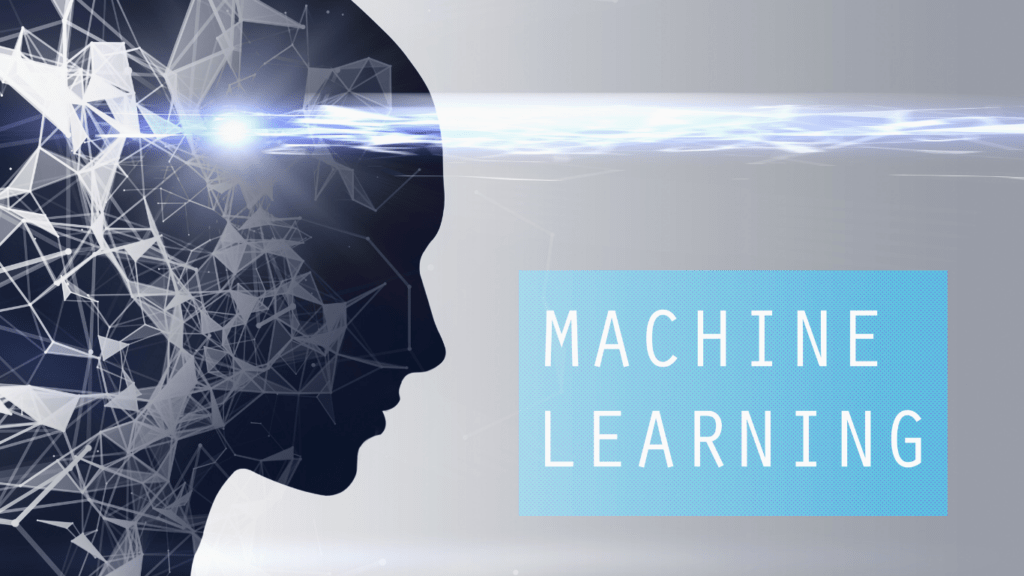The digital world never stands still, and 2025 is shaping up to be a year packed with transformative trends. Every year brings innovations that redefine how we live, work, and connect, but some shifts are so groundbreaking they demand our attention. Staying ahead in this fast-paced landscape isn’t just a luxury—it’s a necessity.
From advancements in artificial intelligence to breakthroughs in immersive tech, these trends are set to revolutionize industries and create new opportunities. I’ve been keeping a close eye on what’s coming, and trust me, these changes will impact how we interact with technology in ways we can’t ignore. Let’s dive into the top 10 emerging digital trends that’ll shape our future.
Overview Of Emerging Digital Trends In 2025
In 2025, digital innovation continues to reshape industries, fostering interconnected ecosystems and driving efficiency. Breakthroughs in artificial intelligence (AI), 6G connectivity, and extended reality (XR) redefine how businesses operate and how individuals interact with technology.
1. AI Expansion Across Industries
AI systems enhance decision-making processes and productivity. Sectors such as healthcare use AI for predictive diagnostics, manufacturing leverages AI-driven automation, and retail deploys AI for personalized customer experiences.
2. 6G Connectivity Revolution
6G networks amplify data transfer rates and reduce latency. Real-time applications, including remote surgery and automatic vehicles, gain unprecedented reliability with this technology.
XR bridges physical and digital boundaries. Virtual and augmented reality applications enrich education, training simulations, and customer engagement in retail.
3. Sustainability Through Tech Innovation
Green technologies prioritize energy efficiency and carbon reduction. AI advancements and IoT sensors optimize renewable energy solutions and industrial resource management.
These trends, driven by advancements in core technologies, highlight 2025 as a transformative year for digital innovation and adoption.
Trend 1: Artificial Intelligence And Machine Learning Advancements
AI and machine learning advancements are driving significant changes in how technology integrates into daily life. In 2025, these technologies are expected to accelerate efficiency and innovation across industries.
Major Developments In AI Technology
AI is adopting generative capabilities, producing realistic text, images, and even videos. Specialized models like ChatGPT (OpenAI) showcase AI’s ability to create human-like conversations and solve complex problems. Edge AI, which processes data locally rather than in the cloud, is improving privacy and reducing latency. Innovation in neural networks is enabling deeper learning and better predictive analytics, aiding real-time decision-making in autonomous systems. AI is also evolving through explainable AI (XAI), which makes decision processes more transparent, crucial in sensitive applications like healthcare and finance.
Impacts On Various Industries
Healthcare is seeing AI improve diagnostics through pattern recognition in medical imaging and personalized treatment plans. Manufacturing uses AI-driven automation and predictive maintenance to optimize operations. Retail integrates machine learning for personalized shopping experiences and inventory management. Financial services rely on advanced algorithms to detect fraud and automate trading. AI’s role in agriculture includes precision farming techniques such as crop monitoring and yield prediction, driving sustainable practices. Every industry is adapting as AI enhances scalability and minimizes manual intervention.
Trend 2: Rise Of Extended Reality (XR)
Extended Reality (XR), encompassing Virtual Reality (VR), Augmented Reality (AR), and Mixed Reality (MR), is transforming how individuals engage with digital ecosystems. By 2025, XR is expected to redefine experiences across sectors, merging physical and digital environments seamlessly.
Growth Of Virtual Reality (VR) And Augmented Reality (AR)
VR and AR technologies are expanding rapidly, driven by advancements in hardware and software. VR immerses users in entirely virtual environments, while AR overlays digital content on the real world through devices like smartphones or AR glasses. In 2025, more compact, wireless VR headsets and AR glasses with enhanced visuals and interactivity are forecasted to dominate the market. For instance, Meta’s Quest series and Apple’s AR solutions demonstrate this technological leap. Global spending on AR and VR is projected to exceed $160 billion by 2025 (Statista), reflecting growing demand across industries.
Applications In Business And Entertainment
XR is revolutionizing business workflows and entertainment experiences. In business, AR applications improve product visualization and training programs, while VR enables immersive simulation for sectors like healthcare and aviation. Teams in remote locations collaborate in VR-powered virtual offices or conduct AR-based quality inspections in manufacturing. In entertainment, the gaming industry integrates VR to deliver highly immersive experiences, as seen in titles like “Half-Life: Alyx.” AR enhances interactive content in sports broadcasting and live events, boosting fan engagement. XR’s cross-industry integration shows no signs of slowing.
Trend 3: Expansion Of The Internet Of Things (IoT)
The Internet of Things (IoT) is rapidly transforming digital ecosystems by connecting billions of smart devices globally. By 2025, IoT is projected to integrate deeper into our daily lives, enhancing connectivity, productivity, and convenience in unprecedented ways.
Smart Devices Integration
IoT has enabled seamless integration of smart devices, creating interconnected systems that operate efficiently. As of 2023, over 14 billion IoT-connected devices were active, and this number is expected to exceed 25 billion by 2025. Smart homes feature IoT-enabled thermostats, lighting, and security systems like Nest and Ring, offering convenience through remote monitoring and automation. In industrial settings, IoT enhances predictive maintenance and process optimization with devices like smart sensors. The expansion of edge computing will further empower IoT, enabling real-time data processing for critical applications such as autonomous vehicles and healthcare monitoring.
IoT In Everyday Life
IoT is transforming everyday life by integrating technology into routine activities. Wearable devices like smartwatches monitor health metrics, improving fitness tracking and chronic illness management, while smart appliances redefine household convenience. Retail experiences are evolving through IoT-powered inventory management systems and personalized shopping enabled by smart tags and AI algorithms. In urban environments, IoT supports efficient transportation through smart traffic systems and connected public transit, enhancing mobility. Cities like Singapore and Barcelona lead in adopting IoT for real-time data to manage resources and infrastructure effectively. This pervasive adoption indicates IoT’s significant role in shaping daily interactions and urban landscapes by 2025.
Trend 4: Development Of 6G Networks
The development of 6G networks is set to redefine the digital landscape by 2025, promising unprecedented speed and transformative connectivity. With its introduction, 6G is expected to enable breakthroughs across industries and enhance global communication systems.
Speed And Connectivity Enhancements
- 6G networks are anticipated to deliver data transfer speeds up to 1 terabit per second (Tbps), significantly outpacing the 10 gigabit per second (Gbps) capacity of 5G networks.
- These ultra-high speeds will support seamless streaming of 16K resolution video, instant data downloads, and real-time collaboration on complex projects.
- Latency is projected to drop below 0.1 milliseconds, making lag-free, real-time interaction a reality for remote surgeries, autonomous vehicles, and smart factories.
- Network densification will improve connectivity in densely populated urban areas and rural regions by utilizing terahertz frequencies and advanced beamforming techniques.
- Enhanced capacity will allow billions of connected devices to operate simultaneously, supporting the expansion of IoT ecosystems, immersive experiences, and AI-powered infrastructure.
Implications For Global Communication
The rise of 6G networks will revolutionize global communication by enabling instant, high-quality connections between individuals and organizations worldwide. For satellite-based communication systems, 6G will bridge coverage gaps in remote and underdeveloped areas, improving access to digital services and fostering economic inclusion.
Innovations like holographic telepresence will transform virtual communication, creating lifelike interactions for remote collaboration and entertainment. Businesses will benefit from rapid data exchange in global supply chains and live analytics for decision-making. Additionally, 6G will drive advancements in space exploration, supporting data-heavy interstellar missions with minimal delay.
These developments signify a future where speed, efficiency, and universal access become foundational to the digital era.
Trend 5: Blockchain Evolution Beyond Cryptocurrency

Blockchain technology is advancing rapidly, transforming industries far beyond the realm of cryptocurrency. As we move toward 2025, its potential to revolutionize various sectors becomes increasingly evident.
Emerging Use Cases
Businesses, governments, and organizations are leveraging blockchain for diverse applications. Supply chain management is among the most notable, where blockchain ensures end-to-end transparency and minimizes fraud by tracking products from origin to destination. For example, companies like IBM are using blockchain for food safety initiatives. The healthcare industry is enhancing patient data security and accessibility through decentralized storage systems. Digital identity verification is another growing use case, as blockchain establishes tamper-proof identities, proven by initiatives like ID2020.
The finance sector also continues to adopt blockchain beyond cryptocurrencies. Cross-border payments are faster and cheaper, with platforms like Ripple facilitating seamless transactions. Smart contracts are transforming industries like real estate and insurance by automating agreements and eliminating intermediaries. Additionally, government applications include secure voting systems, reducing electoral fraud risks.
Security And Transparency Benefits
Blockchain’s design enhances security and transparency across operations. Its decentralized ledger ensures that no single entity can manipulate data, providing higher trust levels for sensitive transactions. Immutable record-keeping prevents unauthorized modifications, which is crucial for applications like healthcare data and financial records.
Companies are adopting blockchain to enhance transparency in ESG (Environmental, Social, and Governance) reporting, allowing real-time data tracking for sustainability goals. Additionally, organizations use blockchain to combat counterfeit goods by verifying product authenticity, particularly in luxury goods and pharmaceuticals. This technology reinforces secure networks where transactions are traceable and auditable, preserving trust across digital ecosystems.
Trend 6: Growth Of Edge Computing
Edge computing is reshaping how data is processed and utilized in 2025. By decentralizing data handling, it’s driving faster, more efficient systems across industries.
Enhanced Data Processing
Edge computing processes data closer to its source instead of relying on centralized servers. This approach improves processing efficiency, particularly for applications such as autonomous vehicles and smart cities, which require real-time analyses. For example, self-driving cars use edge-enabled sensors to process data instantly, ensuring immediate decision-making for safety. Edge computing also plays a pivotal role in industrial IoT, where local data handling optimizes performance in smart manufacturing systems. By minimizing congestion in data centers, this computing trend reduces processing delays and enhances overall system reliability.
Role In Reducing Latency
Latency is significantly reduced with edge computing by eliminating the need for data to travel long distances to centralized servers. Applications like augmented reality devices, remote surgeries, and autonomous drones benefit from quicker processing speeds. For instance, AR glasses render complex virtual overlays faster with edge servers positioned nearby, enabling seamless user experiences. Medical procedures relying on real-time precision, such as remote-controlled robotic surgeries, gain higher reliability with ultra-low latency. This makes edge computing critical for ensuring instant response times in scenarios where delays could lead to inefficiencies or risks.
Trend 7: Advances In Cybersecurity
Cybersecurity is evolving rapidly to address complex technological threats in 2025. Innovations focus on proactive measures and advanced strategies to protect digital ecosystems.
AI-Powered Security Solutions
AI is transforming cybersecurity by enabling sophisticated threat detection and response. Machine learning algorithms identify patterns in vast datasets, detecting anomalies that indicate potential breaches. For example, these systems analyze user behavior to flag unauthorized activities or phishing attempts. AI supports real-time threat intelligence, crucial for combating cyberattacks like ransomware and zero-day exploits. Automated defense systems reduce response times and human error, ensuring faster mitigation of risks.
Importance Of Data Protection
Data protection is critical as digital dependency increases. Regulatory frameworks like GDPR and CCPA impose strict guidelines that organizations must follow to secure user information. Encrypting sensitive data safeguards against breaches, while strategies like tokenization enhance privacy in financial transactions. Cyber resilience measures, such as disaster recovery plans and regular penetration testing, maintain system integrity even during attacks. Strengthening data governance instills trust and compliance across industries, from healthcare to e-commerce.
Trend 8: Quantum Computing Breakthroughs
Quantum computing is set to redefine data processing and problem-solving, with breakthroughs driving exponential growth in speed and computational power by 2025.
Key Innovations in Quantum Technology
Quantum processors are advancing rapidly, enabling calculations that are impossible for classical computers. In 2025, qubit stability is improving through error-correction techniques, enhancing the reliability of quantum systems. Major organizations like IBM and Google are developing systems with over 1,000 qubits, achieving significant milestones in quantum volume. The emergence of quantum-safe cryptography ensures secure data transmission, addressing future cybersecurity challenges. Governments and private sectors worldwide are increasing R&D investments, fostering collaborations to accelerate quantum advancements.
Impact on Computing and Problem-Solving
Quantum computing optimizes operations in industries requiring complex calculations. In drug discovery, it’s simulating molecular interactions, reducing development timelines for therapies. Financial institutions are leveraging quantum algorithms to improve portfolio optimization and risk assessment. In logistics, it’s solving routing problems efficiently, saving time and resources. Climate modeling benefits are evident, with quantum systems providing precise simulations to combat environmental challenges. The unparalleled speed and power of quantum computing are transforming problem-solving capabilities, enabling breakthroughs across critical sectors.
Trend 9: Sustainability-Focused Technologies
Sustainability-focused technologies are transforming industries, addressing environmental challenges, and promoting greener practices. By 2025, these innovations are driving efficiency, reducing resource consumption, and fostering eco-conscious strategies.
Eco-Friendly Digital Solutions
Eco-friendly digital solutions leverage technology to combat environmental impact. Smart grids and IoT systems optimize energy distribution, minimizing waste and improving efficiency. Electric vehicle (EV) charging networks integrate with renewables to enhance sustainability in transportation. Cloud computing providers adopt green data centers powered by renewable energy, cutting carbon footprints while supporting digital growth. AI algorithms analyze energy usage patterns, enabling better energy management and conservation strategies.
For example, companies like Siemens and Schneider Electric implement energy-efficient IoT platforms targeting industrial and residential spaces. Similarly, Google’s carbon-intelligent computing shifts workloads to data centers based on renewable energy availability, reducing emissions.
Green IT Practices
Green IT practices prioritize reducing energy use and waste in IT lifecycle management. Sustainable hardware design incorporates recyclable materials, while energy-efficient components, like solid-state drives (SSDs), improve performance with lower energy consumption. Virtualization and server consolidation reduce hardware demand by optimizing resource use. E-waste recycling programs ensure responsible disposal of outdated devices, reducing landfill contributions.
Major organizations, including Dell and HP, embrace circular economy models by refurbishing and recycling devices. Additionally, IT infrastructure providers increasingly adopt modular systems for longer lifespans and reduced environmental impact.
Trend 10: Personalization Through Big Data Analytics
Personalization is transforming digital interactions through the strategic use of big data analytics. Businesses are leveraging data-driven insights to deliver tailored experiences that enhance user engagement and satisfaction.
Customer-Centric Digital Experiences
Big data analytics enables companies to create highly individualized digital experiences. Personalization techniques, such as predictive analytics and customer segmentation, analyze vast datasets to identify user preferences and behaviors. For example, e-commerce platforms like Amazon use algorithms to recommend products based on browsing history and purchase patterns. Spotify’s personalized playlists and Netflix’s tailored show recommendations further exemplify effective data-based user engagement. By aligning content and services with user expectations, businesses are increasing lifetime value and fostering brand loyalty.
Ethical Considerations With Data Use
Ensuring ethical practices is vital in leveraging big data for personalization. Misusing data can violate user privacy and damage trust. Transparent data usage policies and stringent compliance with regulations like GDPR and CCPA are essential. Companies should implement privacy-preserving technologies, such as differential privacy and data anonymization, to protect sensitive information. Examples include Apple’s application of on-device processing to reduce data exposure and Microsoft’s use of encryption in cloud services. Respecting ethical boundaries not only ensures compliance but also strengthens user relationships, establishing a foundation of trust.



